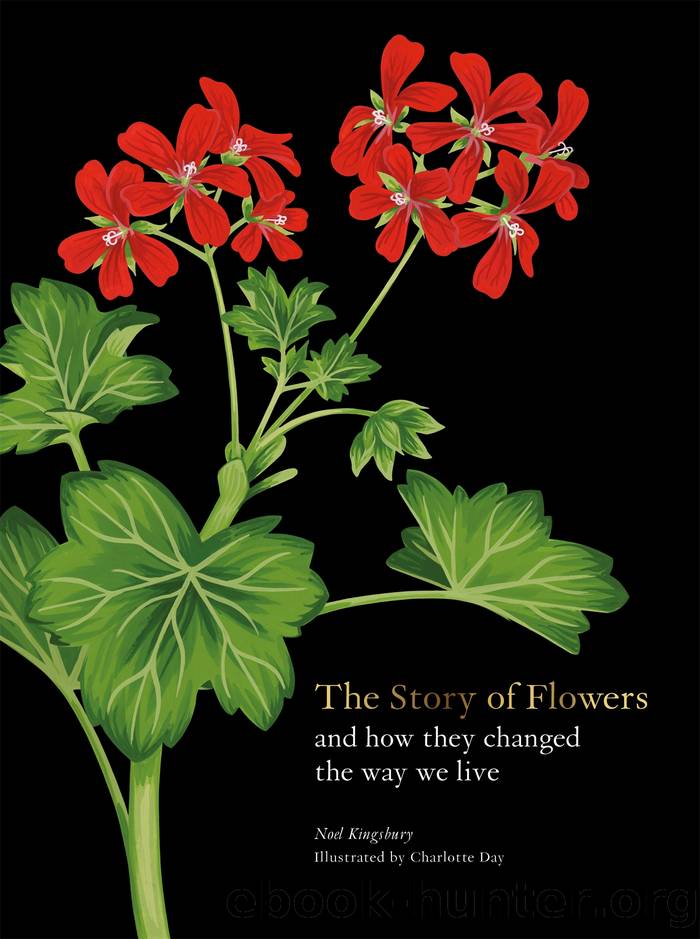The Story of Flowers by Kingsbury Noel;

Author:Kingsbury, Noel;
Language: eng
Format: epub
Publisher: Laurence King Publishing
The seed head of a dahlia keeps the old bracts that enclosed the flower.
Echinacea purpurea (Asteraceae)
Coneflower
Healing herb
The coneflower is one of those rare plants that enjoy a reputation as both healing herb and popular garden flower. Much used medicinally by Native Americans, often for common cold-type ailments, it became popular in folk medicine during the nineteenth century, and then again in the late twentieth century, supposedly as a booster to the immune system, although hard evidence has always been difficult to come by. Trials of its efficacy have been complicated by the fact that there are several species and it has never been clear which is supposed to be the most beneficial.
Although it has been in cultivation since the late eighteenth century, the coneflower only really became popular towards the end of the twentieth, largely because it became the poster boy for the burgeoning native-plant movement. The gardening public loves daisies, it seems, and since this was also a good flower for pollinators, and a source of seed for wild birds in winter, there seemed many more reasons for growing it in the increasingly ecologically aware years at the end of the century. The flower began to appear with increasing regularity on the posters, letterheads and websites of anyone or any organization promoting or selling native plants and the concept of garden biodiversity. Breeders, however, could not leave it alone and made crosses with other species, notably the yellow E. paradoxa, producing a range of yellow, orange and apricot hybrids with great commercial potential but an even shorter life span than the already short-lived E. purpurea. In warm-summer climates, however, the species easily self-seed, enabling sustainable populations to build up, at least as long as the gardener is not too ruthless in weeding.
Origin
Eastern half of the United States
Longevity
Short-lived perennial
Size
About 1 m (3 ft)
Habitat
Prairie, woodland edge
Colours
Pink; cultivated forms include reds, oranges, yellows and white
Download
This site does not store any files on its server. We only index and link to content provided by other sites. Please contact the content providers to delete copyright contents if any and email us, we'll remove relevant links or contents immediately.
Craft Beer for the Homebrewer by Michael Agnew(17978)
Marijuana Grower's Handbook by Ed Rosenthal(3538)
Barkskins by Annie Proulx(3209)
Project Animal Farm: An Accidental Journey into the Secret World of Farming and the Truth About Our Food by Sonia Faruqi(3054)
Red Famine: Stalin's War on Ukraine by Anne Applebaum(2825)
The Plant Messiah by Carlos Magdalena(2779)
0041152001443424520 .pdf by Unknown(2660)
Organic Mushroom Farming and Mycoremediation by Tradd Cotter(2580)
In the Woods by Tana French(2454)
Beer is proof God loves us by Charles W. Bamforth(2288)
7-14 Days by Noah Waters(2271)
The Art of Making Gelato by Morgan Morano(2172)
Reservoir 13 by Jon McGregor(2167)
Meathooked by Marta Zaraska(2158)
Birds, Beasts and Relatives by Gerald Durrell(2145)
Borders by unknow(2129)
The 7 Habits of Highly Effective People: Powerful Lessons in Personal Change (25th Anniversary Edition) by Covey Stephen R(2089)
Between Two Fires by Christopher Buehlman(2079)
The Lean Farm Guide to Growing Vegetables: More In-Depth Lean Techniques for Efficient Organic Production by Ben Hartman(2021)
